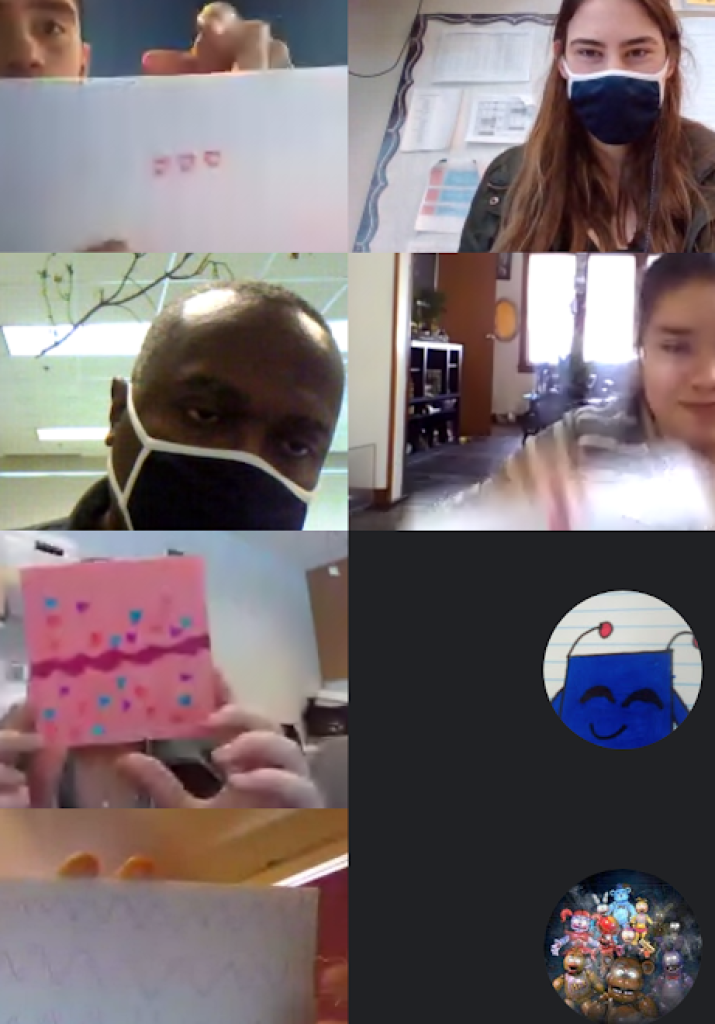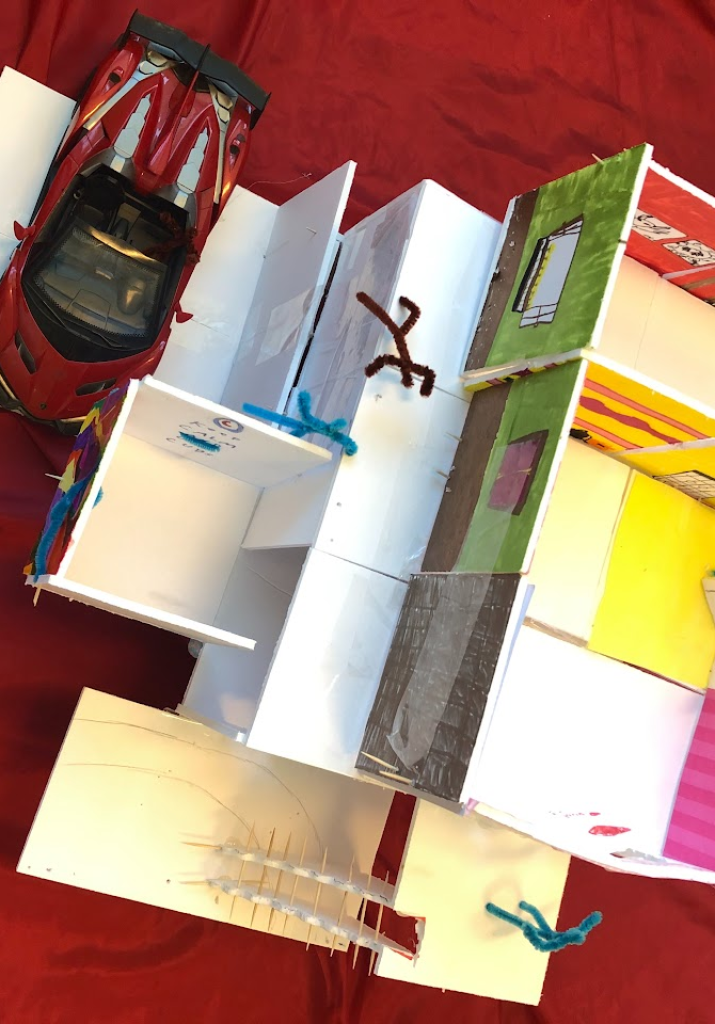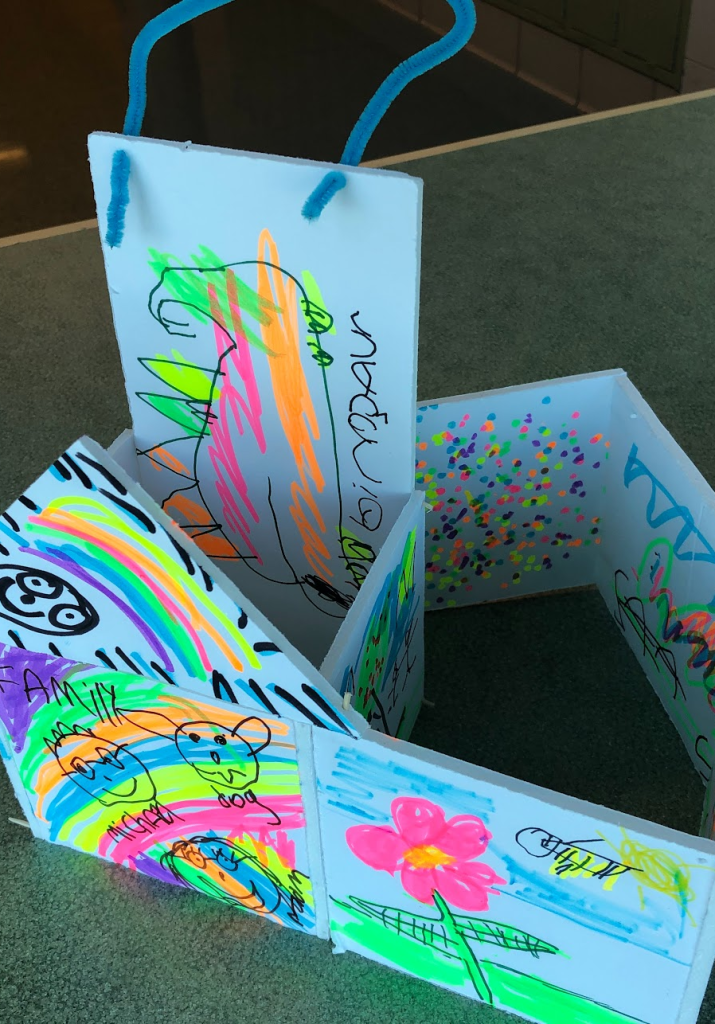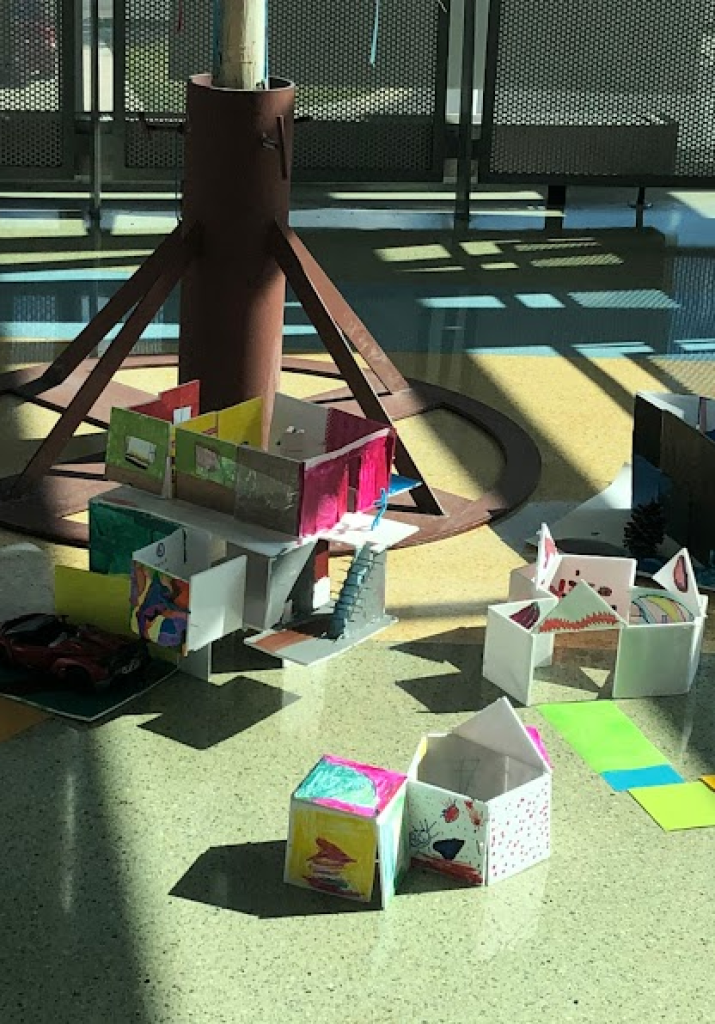What is Adult Life After North-Grand High School?
Last year, North-Grand High School’s teacher, Kristina Bowlus, and CAPE teaching artist Jennifer Mannebach quickly adapted their skills when they learned that the 2020–2021 school year would be completely remote.

Both Ms. Bowlus and Mannebach worked with diverse learners in their classrooms, many graduating at the end of the year. So they decided to ask their students to think about the future and consider the question, “what is adult life?”
Students were left to think about what makes them feel comfortable and safe. From there, they began to think about what life they would like to create after high school. An exercise that feels somewhat familiar, as we also had to ask ourselves this difficult question growing up.
We asked Ms. Bowlus and Ms. Manneback what inspired this project, how the teacher duo introduced the inquiry question to students, and how it was integrated into the project.
“Many of the students are graduating this year, and we wanted to work through ideas regarding adult responsibilities and decision-making. Navigating these concerns often starts with determining what makes you feel comfortable and safe, and how you may want some things to change and some to stay the same.
We borrowed a prompt from the NYTimes to get started: “What do you want to see more and less of in 2021?” Students divided the page in half and drew things that represented their intentions, and talked about why they made those choices.
Some expanded this to talk about personal goals for themselves, such as “I want to tell/show people who I am” and “I want to learn to control my anger better, so I don’t hurt people’s feelings.”

Students began with setting personal goals, making choices about where they’d like to live, and asking adults questions and advice. The class created abstract furniture digitally and experimented with placing their class’s furniture in several floor plans.
- Students made choices about where they would like to live- proximity to family, friends, job…urban, rural. They also came up with interview questions for adults like “How can you prevent yourself from getting tricked/scammed?”
- Google slides were used to play with creating abstractions of furniture and items inside a home.
- Students moved their objects around within a variety of floor plans.
- Students worked remotely to create foam core ‘walls’ and talk about design and structure. Some were more literal than others. A few chose to create a narrative within their wall surfaces, and they learned from each other’s examples.
- Two students combined their home structures.
- A few students were back in class by April.
- Xavier’s structure
- Stacy’s structure
- Fabian’s structure
We also asked Ms. Bowlus and Ms. Manneback how their project changed over the school year and what motivated the shifts they had to make.
Some students had trouble imagining the raw materials coming together to create a 3D form. Others were more into the 3D possibilities and wanted to rush through the drawing/surface application.
We provided more time and created several image presentations that demonstrated a variety of possibilities. For some, we had to be more direct about what we were asking.
We also looked at the work of Sarah Sze to encourage finding materials around their homes- beyond what was provided in the kits, so that they would feel confident about experimenting.
We ended up talking about sound – We used Spotify and Youtube to find ambient noises that students chose to have around their imagined neighborhood. “What would you hear from your window?”

Ms. Bowlus and Mannebach prepared an art supplies kit and delivered them to students. The students used these kits to create ‘walls,’ which lent to abstract and literal interpretations. By April 2021, some students returned to in-classroom learning at the school, and at that time, they expanded on the initial wall experiments and began constructing dream houses.
The final creation that spawned from the project was a short video capturing each student-made structure arranged into a village. Students searched streaming platforms like Youtube and Spotify to find ambient noise or music to imagine what they would like to hear from the windows in their homes. As a final project, the students saved and produced these sounds into a microfilm.
However, not all students were able to participate due to the COVID-19 pandemic. Some students who did join via google meets sessions were excited and ultimately proud of their work.
For more information on the students of North-Grand High School’s project and to read about the experience in Kristina Bowlus and Jennifer Mannebach’s own words, visit their webpage here.

















